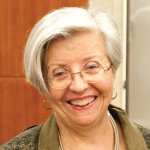 The recent election of Bill de Blasio, a self-proclaimed and unabashed progressive, is at once reflecting and generating renewed interest in a century-old philosophy and approach to social policy and service. De Blasio unexpectedly pulled ahead in, and ultimately won, the hotly contested New York City mayoral race around a consistent and powerful theme of “A Tale of Two Cities,” calling attention to the growing gap between poor and wealthy families, the urgent need to address these inequalities, and a bold proposal to raise taxes on the city’s most affluent citizens in order to pay for expansion of early-childhood and after-school programs.
The recent election of Bill de Blasio, a self-proclaimed and unabashed progressive, is at once reflecting and generating renewed interest in a century-old philosophy and approach to social policy and service. De Blasio unexpectedly pulled ahead in, and ultimately won, the hotly contested New York City mayoral race around a consistent and powerful theme of “A Tale of Two Cities,” calling attention to the growing gap between poor and wealthy families, the urgent need to address these inequalities, and a bold proposal to raise taxes on the city’s most affluent citizens in order to pay for expansion of early-childhood and after-school programs.
Of late, we have been hearing similar language and themes from a variety of other sources. President Obama has been emboldened in his second term to speak much more frequently, forcefully and eloquently than in the past about the growing economic and social inequality plaguing our country, and about the role of public policy and social programs in addressing these issues. Perhaps his decision to use the bully pulpit in this way has been influenced by Doris Kearns Goodwin’s eponymous best seller that analyzes the progressive policies of two activist national leaders from American history, Theodore Roosevelt and William Howard Taft. Meanwhile, noted economist Paul Krugman recently spoke in a New York Times op-ed column of “a rising, increasingly confident progressive movement” taking hold in our country.
OK, if a new Progressive Era is upon us, we’d better understand what the phrase meant then and what it could mean now, given our role as youth workers. The Progressive Era was a period of intense social reform that took place from roughly 1890 to 1930. Historians disagree about when the era actually ended, but they do concur about when, and why, it started. The societal factors that spawned the Progressive movement in the 1890s will sound familiar: the end of the Gilded Age, which had produced extreme income disparities between the wealthy and the poor, a major economic crisis that pushed huge numbers of Americans into deep poverty, large waves of immigration that precipitated seismic shifts in urban neighborhoods, and the Industrial Revolution that required major changes in how our country chose to educate and support its young people.
As the Progressives responded to these trends through a wide array of social and economic changes, they generated what one historian termed a “reform riot.” Many of our current social institutions — including compulsory education, child labor laws, juvenile courts, settlement houses and youthserving organizations — are products of this innovative period.
If we really are launching head-first into a resurgence of this “reform riot,” what are the implications for youth work policy and practice? Maybe we can finally get a national youth policy, the kind that many other countries have. And maybe we can, once and for all, address the outrageous disparities around fiscal equity in the way we finance public education in the U.S. Maybe we can fully fund Head Start and other successful programs that respond to the comprehensive needs of poor children, and maybe we can provide these kinds of positive supports throughout childhood and adolescence, knowing that this is the only way we are going to help all of the nation’s young find a path to productive adulthood. And maybe we can finally help the U.S. electorate understand that taxes supporting these effective programs are investments that pay a strong social return.
All of us can become advocates for programs designed to ameliorate the well-documented opportunity gap that faces poor children, both in and out of school. And all of us can support and vote for progressive candidates who are willing to speak truth to power, including that segment of the voting public that often seems disinterested in paying for services that benefit other people’s children. In other words, youth workers should take their knowledge of the social challenges facing their constituents to the polls as well as to their workplaces. Our duty as professionals and as citizens demands nothing less.
Jane Quinn works at The Children’s Aid Society in New York City, where she serves as Vice President for Community Schools and as Director of the National Center for Community Schools.































